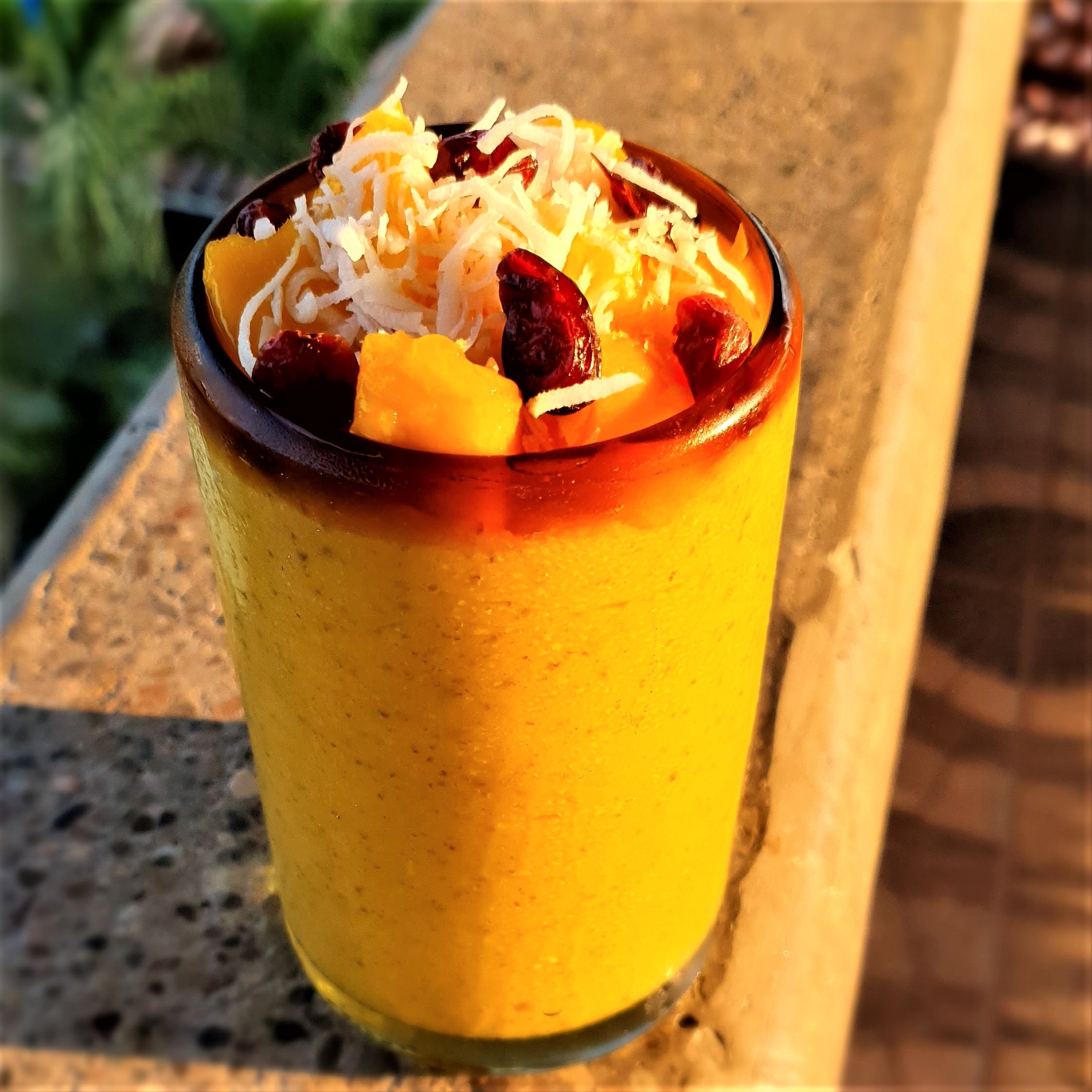Regular Mango to keep you regular!
May 20th, 2021
Mangos are hands down my favorite fruit in the world! I’m not sure what lures me to them so much; the deep orange color, the floral-fruit smell, the smooth texture, or is it simply because this delicious fruit peaks in the summer time (my favorite season)? I believe it is a combination of all of these factors, plus the fact that this fruit brings back joyful memories of days relaxing on the beach, swimming in the refreshing water, and spending time with family! Now that research has discovered amazing health benefits of mangos, particularly when it comes to digestive health, I will gladly keep eating this fruit on a daily basis!
Here in Mexico mangos are known as the ‘King of Fruits’, with the state of Nayarit being one of the top producers of mango in the country. In fact, 70% of mangos consumed in the USA come from Mexico! However mangos are not native to Mexico; they were introduced back in the 1700’s, and have taken off from then! Mango season starts here in April and peaks at the end of May and into June, depending on the variety. So, mango season is upon us!
Mangos are not only high in the immune enhancing vitamin C, but also high in a soluble fiber and digestive enzymes for gut health and regularity. To find out how mangoes benefit our digestion, let’s first see what the normal process of digestion is. The digestive system starts at your mouth and ends in the toilet – but not for everyone. Once food enters your mouth, the first stage of digestion occurs as you chew and mix your food with your saliva that contains enzymes to start breaking down the foods you are eating. The food passes down your esophagus and into your awaiting stomach, which contains very strong acids to further breakdown the foods. Once the broken-down food moves out of the stomach and into the small intestine, some foods require extra digestion so enzymes from the pancreas, liver and gallbladder work on the food to break up the nutrients into small enough parts so that is can be best absorbed into the body to be used as a source of fuel for energy, growth and cell repair. Any food stuffs that are not able to be broken down and not absorbed such as fiber, enter the large intestine. The soluble fiber can contribute to good bacterial balance, and the insoluble fiber can act as a brush – scrubbing out your insides until they have their final resting place in the loo!
Mangos help with this process of digestion by increasing a group of digestive enzymes called amylases. These digestive enzymes can start to breakdown large food molecules so that they can be more easily absorbed, starting with the saliva in our mouth and travelling to the small intestine. The amylase activity in mangos break down complex carbohydrates and starches into sugars, and these enzymes are more active in ripe mangos, which makes them sweeter than unripe ones, and better for your digestive health.
In addition to these amazing digestive benefits, the mango also contains plenty of water and dietary soluble fiber to assist with issues like constipation. The soluble fiber found in mangos, when digested, dissolves in water to form a gel-like substance that performs many beneficial functions, such as binding to cholesterol and other fatty acids and promoting their excretion, which can in turn balance healthy blood cholesterol levels. Soluble fiber can also help control blood sugar levels by slowing the rate at which the small intestine absorbs glucose and this delays gastric emptying, which in turn helps you to feel fuller for longer and therefore helps to prevent overeating, thereby contributing to weight loss.
The mango's insoluble fiber binds to water instead of dissolving in it, which allows it to keep material moving through the digestive tract and generate larger, softer stools that are easier to pass. In addition to this the phytochemicals found in mango’s assist in reducing gut inflammation, and have a gastroprotective effect due to the anti-inflammatory and antioxidant properties aiding in digestive health, even reducing conditions like ulcerative colitis.
There are many varieties of mango, so it’s a good idea not to pick a ripe mango based on its color alone. I recommend you give a little gentle squeeze to the mango in your hand. It should be a little soft but not have large soft spots on its skin, as this can indicate bruising or insect visits. Check that the stem is not green, and give it a sniff. Ripe mangos will have that heavenly sweet aroma. With so many benefits for your gut health – give this recipe a try to keep you regular!

MIGHTY MANGO MOUSSE
Serves 2
2 medium sized mangos (whichever variety you prefer)
½ cup plain acidophilus yoghurt (no sugar added)
3 Tablespoons Coconut Flakes
1 Tablespoon Coconut Sugar
1 Tablespoon Chia seeds
Juice of 3 Limes
1 Tablespoon Agave syrup
Pinch of sea salt or Himalayan salt
Dried Cranberries for topping
Peel mangos and remove flesh from pits. Cut mangos into small cubes set ½ cup aside for topping. Place the remaining mango into a blender, along with the yoghurt, 2 tablespoons of the coconut flakes, Juice of 2 of the limes, chia seeds, coconut sugar and a pinch of salt. Blend until a smooth texture remains. Place into two large glasses, and place in the fridge or freezer for 1 hour or more depending on the thickness you prefer. With the remaining mango, toss with the remaining juice of 1 lime, 1 tablespoon coconut flakes, agave syrup and dried cranberries. Top the mousse with this mix and enjoying the digestive benefits!
